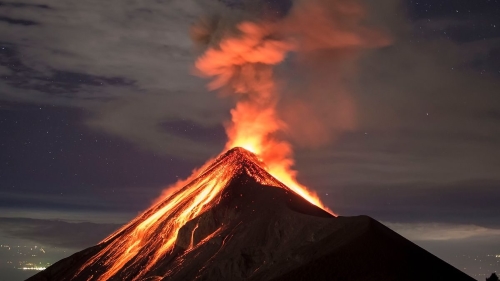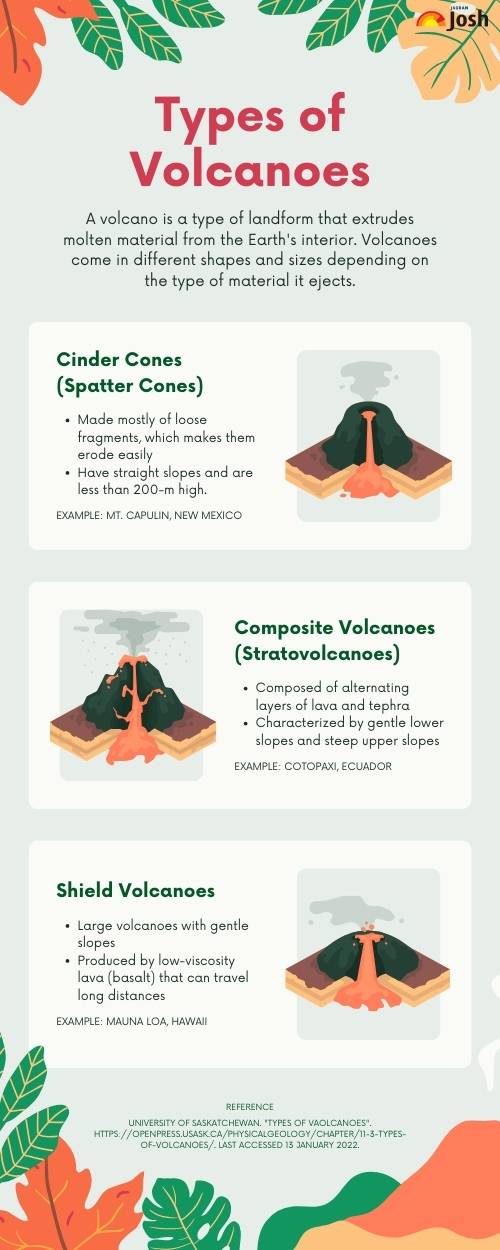Volcanoes in India are a fascinating yet rare geological phenomenon. These natural formations result from the movement of molten rock beneath the Earth's crust. While some volcanoes in India remain active, others have become dormant or extinct over millions of years. This article provides a detailed overview of India's volcanoes, their types, and their activity status.
What is a Volcano?

Source: BBC
A volcano is a geological structure that allows molten rock (magma), gases, and ash to escape from beneath the Earth’s crust. When this magma reaches the surface, it is called lava. Over time, repeated eruptions form volcanic mountains.
Formation of Volcanoes
- The Earth’s crust contains cracks or openings through which magma escapes.
- When magma reaches the surface, it cools and solidifies, forming a volcano.
- Repeated eruptions cause the volcano to grow, developing distinct shapes and sizes over time.
Types of Volcanoes
Volcanoes can be classified based on their shape, eruption style, and composition. The main types include:
1. Shield Volcanoes
- Broad and gently sloping volcanoes.
- Formed by the slow and continuous flow of lava.
- Example: Mauna Loa in Hawaii (not in India).
2. Stratovolcanoes (Composite Volcanoes)
- Steep-sided, cone-shaped volcanoes are formed by alternating layers of lava and ash.
- Capable of explosive eruptions.
- Example: Mount Fuji (Japan), Mount St. Helens (USA).
3. Cinder Cone Volcanoes
- Small, steep volcanic structures made of rock fragments and ash.
- Formed by explosive eruptions where lava cools quickly in the air.
- Example: Paricutin (Mexico).
4. Lava Domes (Volcanic Domes)
- Formed by slow-moving, thick lava that piles up near the volcanic vent.
- Highly viscous lava leads to dome-like structures.
- Example: Novarupta (Alaska).
List of Volcanoes in India
India has a mix of active, dormant, and extinct volcanoes. The table below provides a summary:
| Volcano Name | Location | Activity Status |
| Barren Island | Andaman & Nicobar Islands | Active (Last erupted in 2020) |
| Narcondam Island | Andaman & Nicobar Islands | Dormant (Last eruption in 1681) |
| Baratang Island | Andaman & Nicobar Islands | Mud volcano (Not highly active) |
| Dhinodhar Hills | Gujarat | Extinct (~500 million years ago) |
| Dhosi Hill | Haryana | Dormant (~750 million years ago) |
| Tosham Hills | Haryana | Extinct (~732 million years ago) |
| Loktak Lake | Manipur | Supervolcanic caldera (~100 million years ago, status unknown) |
| Deccan Plateau | Maharashtra, Karnataka | Extinct (~25 million years ago) |
Detailed Overview of Major Volcanoes in India
1. Barren Island (Active Volcano)
- Location: Andaman Sea, Andaman & Nicobar Islands.
- Significance: The only active volcano in India.
- Eruption History: Recorded eruptions since 1787; last erupted in 2020.
- Geological Importance: Part of the volcanic arc formed due to the subduction of the Indian plate under the Burmese plate.
2. Narcondam Island (Dormant Volcano)
- Location: Andaman Sea, Andaman & Nicobar Islands.
- Status: Dormant; last known eruption in 1681.
- Unique Feature: An isolated volcanic peak, supporting rich biodiversity.
3. Baratang Island (Mud Volcano)
- Location: Andaman & Nicobar Islands.
- Type: Mud volcano; not an erupting volcano.
- Significance: Releases gases and semi-liquid mud, indicating underground volcanic activity.
- Tourist Attraction: Known for mangrove forests and limestone caves.
4. Dhinodhar Hills (Extinct Volcano)
- Location: Gujarat.
- Age: Estimated to be around 500 million years old.
- Current Status: No volcanic activity; now a natural geological landmark.
5. Dhosi Hill (Dormant Volcano)
- Location: Haryana.
- Formation: Estimated to have formed 750 million years ago.
- Importance: Historical and geological significance; associated with ancient texts and legends.
6. Tosham Hills (Extinct Volcano)
- Location: Haryana.
- Age: Estimated volcanic activity occurred 732 million years ago.
- Current Status: No signs of activity; serves as a geological reference for India’s ancient volcanic history.
7. Loktak Lake (Supervolcanic Caldera)
- Location: Manipur.
- Formation: Believed to be part of a supervolcanic caldera, formed around 100 million years ago.
- Uncertain Status: No known eruptions, but geological history remains under study.
8. Deccan Plateau Volcanoes (Extinct)
- Location: Maharashtra, Karnataka.
- Formation: Created by massive volcanic eruptions about 25 million years ago.
- Significance: The Deccan Traps, formed by these eruptions, cover large parts of central and southern India.
Conclusion
India has a rich geological history, with only one active volcano (Barren Island) and several dormant or extinct volcanoes. Understanding these volcanic formations helps us appreciate the dynamic processes shaping our planet. Ongoing research and monitoring of these sites provide valuable insights into Earth's geological evolution.

Comments
All Comments (0)
Join the conversation